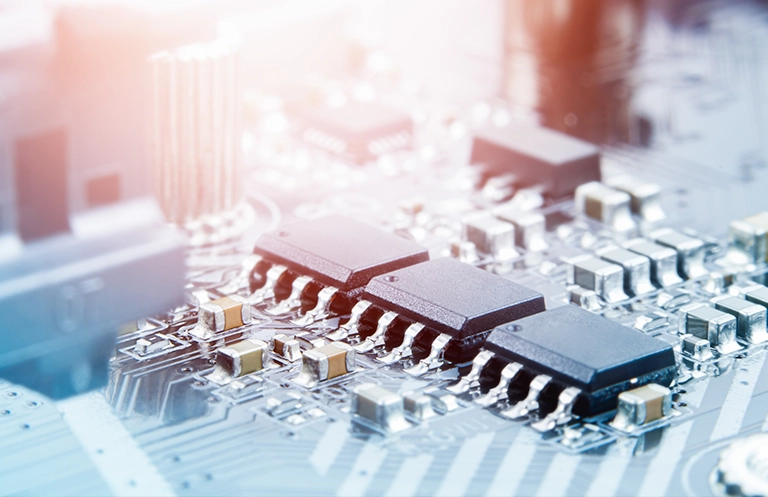According to research, the worldwide wireless charging market was valued at $4.5 billion in 2021, and is expected to reach $13.4 billion by 2026, growing at a CAGR of 24.6 per cent between 2021 and 2026.
Table of Contents
- Types and working of Wireless Charging Technology
- Radio Charging
- Inductive Charging or Near Field Charging
- Resonance Charging
- What are wireless charging standards and its Types
- Qi standard
- Ki cordless kitchen standard
- SAE standard
- Advantages of Wireless Charging Technology
Wireless charging technology, a reliable, convenient, and secure method of powering and charging electrical devices, has been gaining momentum in various industries such as healthcare, automotive, aerospace, and consumer goods production. This technology operates on the principle of electromagnetic induction, where an electric current passed through a coil or cable in a charging station or pad creates a magnetic field, inducing another electric current in the induction coil of a nearby portable device.
Types and working of Wireless Charging Technology
There are three primary types of wireless charging technology: Radio Charging, Inductive Charging or Near Field Charging, and Resonance Charging.
Radio Charging
This type of charging technology uses a combination of tiny batteries and consumes very little electricity. This technology is commonly used with wireless keyboards, wireless mouse, medical equipment, hearing aids, watches, music players, and other devices. To send and receive wireless signals, these gadgets use radio frequency waves.
In this technique, the transmitter is linked to a socket to generate radio waves. You can charge the battery by setting the receiver to the same frequency as that of the transmitter.
Inductive Charging or Near Field Charging
This charging technique employs the principle of electromagnetic induction. When an electric current is passed via a wound-up coil or cable through a charging station or a pad, it creates a magnetic field, which causes another electric current to be created in the induction coil of a nearby portable device.
This charging method is utilized in mid-sized portable gadgets such as the Qi wireless charging standard for smartphones, smart wearables, and Ki kitchen cordless standard for kitchen appliances.
Resonance Charging
Resonance charging is a very different type of charging technique that is utilized in gadgets that require a considerable quantity of power. These methods are employed in big laptops, electric vehicles, vacuum cleaners, and robots. In this, a copper coil attached to the charging device is coupled with another copper coil connected to a power source.
This wireless charging happens when both the copper coils are set to a common electromagnetic frequency. You can easily charge the mobile device battery from the power source. Wireless resonance charging is only possible over short distances.
What are wireless charging standards?
After years of development, three major wireless charging groups have emerged, each focusing on inductive and resonance charging specifications. The Alliance for Wireless Power (A4WP), the Power Matters Alliance (PMA), and the Wireless Power Consortium (WPC), as well as a number of other members from the electronics manufacturing industries, are among those involved. The WPC developed one of the most advanced and popular wireless charging standards, Qi standard (pronounced “Chee”), which enables industrious or pad-style charging as well as short distance electromagnetic resonant inductive charging. The PMA and its Powermat inductive charging specification achieved success by introducing its wireless charging technology in outdoor meeting and refreshment areas, as well as airports.
The A4WP is developing its Rezence specification, which uses magnetic resonance to enable device charging over distances of up to one meter (3.3 feet).
These three standards are not compatible with each other, but all three have begun to develop and promote dual-mode technologies that can charge devices using both inductive and resonant technologies. As the wireless charging industry continues to evolve and grow, we can expect to see more universal standards in the near future that will allow for seamless compatibility among devices and services.
Various Wireless Charging Standards Based on Their Applications
Wireless charging has revolutionized the way we power our devices, offering a convenient and cord-free solution. There are several wireless charging standards in use today, each with its unique applications and characteristics.
Qi standard
Qi wireless charging standard is the most widely used wireless standard. Qi charge was developed by the Wireless Power Consortium (WPC) as a standard for inductive charging across distances of up to 40mm. Many major smartphone manufacturers, including Samsung, Apple, Sony, LG, HTC, Huawei, Nokia (HMD), Motorola, and Blackberry, follow the Qi wireless charging standard. It operates at a frequency of 110-22 kHz and a power of less than 100W. This standard is mostly utilized in the in-vehicle charging, phone chargers, infrastructure chargers, domestic robots, laptop computers, and the speakers.
Ki cordless kitchen standard
The Wireless Power Consortium (WPC) launched the Ki cordless kitchen standard in 2019. This standard applies to cordless kitchen appliances that need up to 2.2kW of electricity, such as the low-voltage juicers, kettles, and other heating equipment. Inductive charging technology powers the gadgets. This standard is utilized in devices that have a frequency of 13.56MHz 50-60kHz and require up to 2200W of power.
SAE standard
SAE is a wireless power transfer (WPT) standard for electric cars developed by the Society of Automotive Engineers (SAE). The charging method used in this system is resonant inductive coupling. According to Forbes, the SAE discovered that wireless charging may function at up to 94 per cent efficiency over a 10-inch air gap. The WPT system is split into two sides ̶ the Ground Assembly (GA) that connects the charging hardware to the grid and the Vehicle Assembly (VA) that is a type of on-vehicle equipment situated on the opposite side of the vehicle .
Advantages of Wireless Charging Technology
- Secure method of charging your device.
- Reduces the complexity of cords and adapters.
- Minimizes the chance of electrical and device failures.
- Reduces the devices’ overheating problem.
- Universal compatibility as Qi charging is a worldwide standard.
- Eliminates the need to carry multiple cables and charging adapters.
- Increases portability as wireless charging can be used in public places.
- Offers faster charging speeds than traditional methods.
The Wireless Power Consortium (WPC) is an international technological consortium located in Piscataway, New Jersey that was founded on December 17, 2008. It aims to develop and encourage widespread market use of its inductive charging interface standards such as Qi, Ki Cordless Kitchen, light electric vehicles, industry wireless charging, and Qi Medium Power. It is an open membership organization that comprises Asian, European, and American firms dedicated to the worldwide standardization of wireless charging technology.
The wireless charging system eliminates the hassles associated with electric charging and allows you to charge your device sans wires. Because humans and pets can trip over cables, wireless power transfer is a safer option for smart homes. Furthermore, wireless charging is faster and provides a solution for damp and unclean settings where electric charging is not feasible. When it comes to the devices themselves, wireless charging allows for the universal charging of multiple devices over a long distance. In the future, home infrastructure will include built-in wireless charging pads, and all gadgets will be required to have wireless charging capabilities.
The WPC is committed to developing, promoting, and certifying wireless power transfer technologies. The consortium has created multiple versions of the Qi wireless charging standard, which are widely used in consumer electronics, automotive applications, healthcare, retail, industrial, and other sectors.
The Wireless Power Consortium also works to ensure compatibility between different Qi products, so that they can be used interchangeably with one another. All Qi-certified products must meet rigorous safety requirements and provide a minimum level of interoperability with other Qi-certified products.
eInfochips is a product engineering company with over 25 years of experience in Device Engineering, Digital Engineering, and Quality Engineering. It has been an innovation partner for many companies. eInofchips has collaborated with NuCurrent, a Fortune 1000 company and founding member of the wireless power consortium known for developing high-potential wireless technology products. NuCurrent has worked on 200+ projects and developed 500+ devices for various verticals, and it has received multiple awards for product innovation globally. eInfochips, in collaboration with NuCurrent, created a variety of wireless charging solutions for wireless earbuds and ruggedized laptops for a US-based manufacturer.
Some glimpse of NuCurrent wireless charging technology:
- NuEva Qi and Custom low-frequency solutions, which offer faster wireless charging solutions for household appliances, furniture, in-vehicle phone charging, and other electronic devices.
- NuEva NFC WLC and Custom Solutions, which can transmit up to 3W of power and have a data rate of 848 kbps and can be used in wearables, hearables, IoT sensors, and fitness trackers.
- NuEva HF premium wireless charging solution for E-mobility, gaming, implanted medical devices, industrial robots, and laptop computers.
- Nuverse Ki cordless kitchen and medium power standard applications are available, and can be used with appliances ranging from kilowatts to miliwatts.
Emerging Trends in Wireless Charging: Shaping the Future of Power
- Rapid Advancements in Fast Charging: A prominent trend is the relentless pursuit of faster wireless charging speeds. Expect even swifter wireless charging solutions that rival or surpass traditional wired charging speeds.
- Extended Range Wireless Charging: The development of extended-range wireless charging is a game-changer. Imagine charging your smartphone while it sits on your desk. This innovation has profound implications, particularly in the electric vehicle sector, where it promises seamless, cordless charging.
- Universal Compatibility: Universal standards like Qi wireless charging are driving greater compatibility among various devices and brands. This trend is set to continue, fostering a more cohesive ecosystem where users can charge multiple devices, from smartphones to wearables, on a single charging pad.
- Integration into Everyday Environments: Wireless charging is gradually finding its way into our daily lives. Look for more furniture items, countertops, and car interiors equipped with built-in wireless charging capabilities. This seamless integration of technology into our surroundings enhances convenience and accessibility.
- Eco-Friendly Solutions: Sustainability is a growing concern, and wireless charging aligns well with eco-friendly practices.
- Multi-Device Charging: As we become increasingly interconnected, the need for multi-device charging solutions is on the rise. Wireless charging pads with multiple coils are gaining traction, enabling users to charge multiple devices simultaneously, from smartphones to earbuds and smartwatches.
- Automotive Integration: Wireless charging in the automotive sector is poised for substantial growth. Electric vehicle manufacturers are exploring wireless charging options to simplify the EV charging process, making it more convenient and accessible.
- Healthcare and IoT Devices: Wireless charging is set to play a vital role in powering medical implants, wearable health devices, and IoT sensors. The ability to charge these devices wirelessly will enhance patient care and enable continuous data collection.
- Public Charging Infrastructure: Public spaces, such as coffee shops, airports, and hotels, are increasingly offering wireless charging stations for patrons. Expect this trend to expand as wireless charging becomes a standard amenity.
- Standardization and Regulation: The development of industry standards and regulations for wireless charging is crucial to ensure interoperability and safety. Continued efforts in this direction will foster a reliable and secure wireless charging ecosystem.
Conclusion
In conclusion, wireless charging is advancing rapidly, offering innovative solutions that cater to our ever-evolving technological needs. As these trends continue to shape the wireless charging landscape, users can look forward to more convenient, efficient, and sustainable power solutions for their devices. Wireless charging offers a variety of advantages, including increased convenience, improved safety, and reduced environmental impact. It is clear that wireless charging technology is here to stay and will continue to evolve and improve with time.
To know more about our capabilities in wireless charging and discuss your next product development project, please reach out to us.













